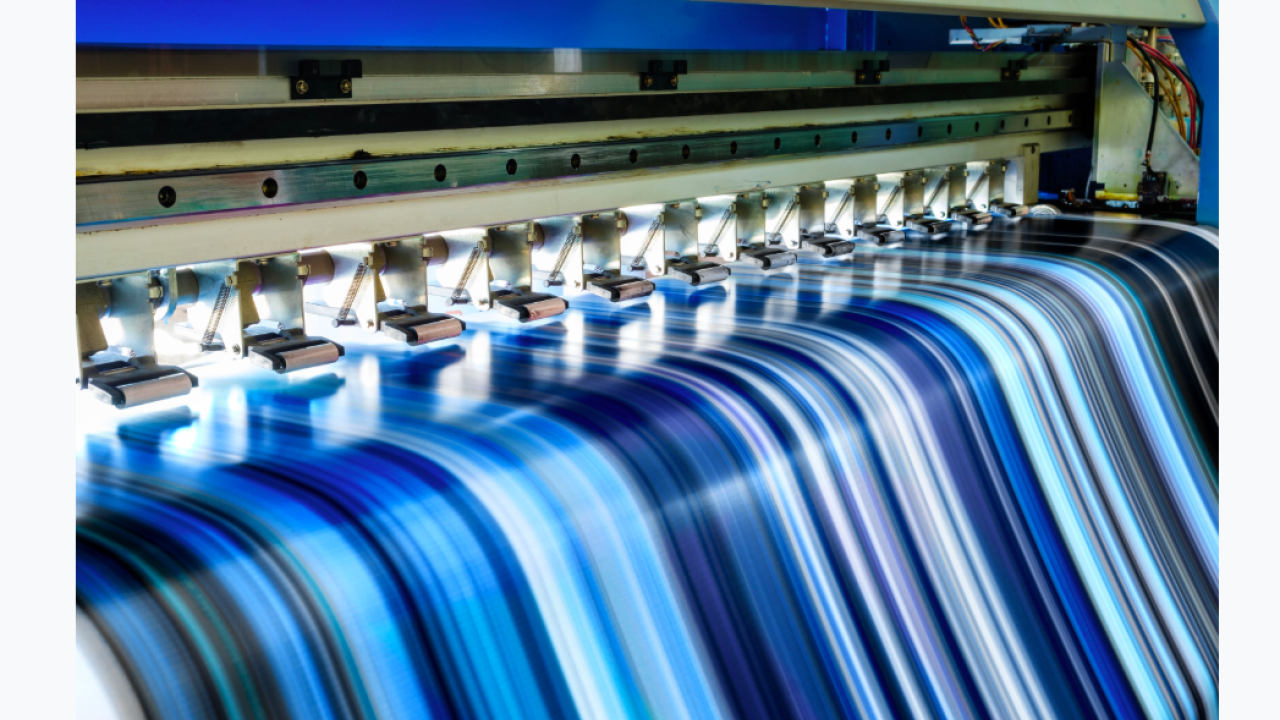Digital printing now growing beyond labels

The label industry has been investing in digital printing presses for more than 20 years, initially with the toner technologies and then, more recently, with inkjet. Put together over that period, the label industry will have installed around 4,500 or so digital presses – of which more than two-thirds are the toner-based presses of HP Indigo (now more than 1,500 HP Indigo’s narrow web Series 3 presses installed) or Xeikon.
Today, installation of digital label presses continues apace. Probably more than 800 new presses will be installed worldwide during 2019 and these are expected to be split nearly equally between the toner and inkjet technologies, added to by hybrid presses utilizing both analogue (predominately flexo) and inkjet in-line and incorporating complex finishing possibilities.
While the toner technologies will still dominate the installed base of digital label presses for some years, inkjet installations are nevertheless growing faster than toner. Of the inkjet installations, some three quarters are UV Inkjet; the remainder being aqueous inkjet. Printing speed and resolution of inkjet continue to improve, with more and more installations incorporating ever-more sophisticated in-line finishing.
Leading the growth of the digital inkjet label press market have been companies such as Domino, Durst, Epson, Screen and EFI, together with a multitude of smaller suppliers – all of which can now be seen at the Labelexpo shows in Europe and America.
By the end of 2020, the latest forecasts indicate that the annual value of digitally printed labels from all the installed digital presses is likely to be approaching $9 billion USD. That’s quite a market, and it’s still growing.
It is perhaps easy to identify why the label industry has so rapidly adopted digital technology. It’s a key supplier to the fast-moving consumer goods industry, with an ever-increasing demand for shorter runs, flexibility in operation, decreasing lead times, more versions and variations, personalization – and most labels are generally easy to fit across the web width of narrow web presses.
Experience
While the flexible packaging and carton printing sectors have more recently started to look at, and begin investing in, digital over the past two or three years, they are way behind the knowledge, understanding and utilization of digital presses in the world of labels. Indeed, most packaging converters are unlikely to have much, if any, experience of digital pre-press and digital printing.
These sectors may have the same demands from the consumer goods industries for shorter runs and versions, but the carton and bag images that require printing are mainly far too big to fit on narrow web presses. Much wider presses are required to meet the majority of package printing demands. These sectors also have different finishing requirements to those required of labels.
Now trying to catch up with the flexibility, performance and opportunities offered by digital, new generations of wider web digital flexible packaging and B1 and B2 sheet-fed carton presses have started appearing in the market since 2014, and growing installations of such machines are now being made – between them utilizing both toner and inkjet technologies, as well as first generations of hybrid package printing presses.
Digital presses designed and built for the carton printing and converting industry include toner machines manufactured by HP Indigo, Xeikon and Xerox, while inkjet and hybrid machines are now coming from Heidelberg, KBA, Konica Minolta, Landa and others.
HP Indigo also has a flexible packaging toner press, while flexible packaging inkjet and hybrid models are now available from the likes of Uteco/Kodak, MPS and Omet.
Being bigger and wider, presses for digital package printing are likely to be two to three times the investment cost of a narrow web label press, and many purchasers will probably need to upgrade their pre-press systems as well. They will also have a higher volume and value throughput and, by the end of this year, could be accounting for up to 20 percent of digital label and package print value – raising the global value of digital label and package printed products to perhaps $10 billion USD or so by 2020.
While some digital label converters are already producing sachets, pouches, pot lids etc on mid web presses and others are tackling smaller folding cartons, the opportunity and potential for the label industry to utilize and leverage its digital technology experience, market knowledge and expertise in the growing world of digital package printing is still immense. Even in joint venture developments. Leave it another few years and the package printing industry will have developed its own skills and knowledge and the opportunities will almost certainly diminish.
Who in the label industry will be brave enough to take on the opportunities?
This Opinion was first published in Labels & Labeling issue 2, 2019.
Stay up to date
Subscribe to the free Label News newsletter and receive the latest content every week. We'll never share your email address.


